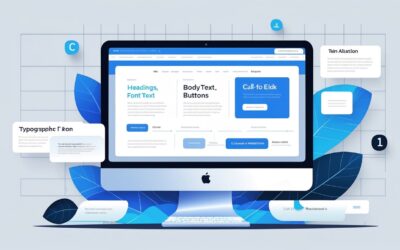If you want your website to actually do something for your business—not just sit there looking nice—you need to be using analytics. It shows you what’s happening on your site, what’s working, and what’s falling flat. No guesswork. Just data you can act on.
You’ll see what pages people visit, how they found you, how long they stick around, and where they drop off. With that kind of info, it’s way easier to fix what’s not working and double down on what is.
Quick Summary:
- Website analytics help you understand how people use your site and where things fall apart
- You’ll get data on traffic sources, user behaviour, conversions, and content performance
- Knowing what works (and what doesn’t) lets you improve UX, boost conversion rates, and make smarter marketing decisions
- You can track trends over time, personalize experiences, test ideas, and optimize every part of your site
- It’s not just about tracking numbers—it’s about using them to grow
Scroll on for the full breakdown. Let’s get into the details.
Understanding Website Analytics
Website analytics help you understand what people actually do on your site. Not what you think they do. Not what you hope they’re doing. What’s really happening.
You can see which pages get the most visits, how long people stay, what they click, and which pages are losing their interest. You also get a snapshot of where they came from—search, social, direct, referrals, ads, whatever.
What Website Analytics Actually Are
Analytics is just a fancy way of saying “we’re tracking stuff.” It’s the data collected from your visitors as they interact with your site. You’re watching the clicks, the scrolls, the time spent, the pages visited. Tools like Google Analytics, Hotjar, and Mixpanel collect all this and turn it into readable reports.
It’s like getting a look at how people walk through your store: where they stop, what they pick up, what they skip, and when they leave. Once you know that, you can actually do something about it.
What Kind of Data You’re Collecting
There’s a lot of data coming in, but here are the main buckets:
- Traffic Sources – Are people finding you through Google, social media, ads, email, etc.?
- User Behaviour – What do they click? How far do they scroll? Do they leave immediately or stick around?
- Demographics – Where are they located? What device are they using? What language?
- Conversions – Are people taking action (like filling out a form or making a purchase)?
- Content Performance – Which pages are doing well and which ones are ghost towns?
You don’t need to be tracking every stat under the sun, but these are the ones that actually help you make decisions.
On-Site vs Off-Site Analytics (Quick Breakdown)
- On-site analytics = What’s happening on your website. Think: page views, session duration, conversion rate, exit pages.
- Off-site analytics = What’s happening outside your site that still affects your brand. Stuff like backlinks, mentions, traffic from other platforms, search engine rankings.
You want both. On-site tells you what users are doing when they’re with you. Off-site tells you how they found you and what your reputation looks like elsewhere.
Key Performance Indicators (KPIs) for Business Websites
Alright, so once you’ve got analytics set up, what should you actually be looking at? That’s where KPIs come in—Key Performance Indicators. These are the numbers that tell you how your site’s doing and whether it’s helping or hurting your business goals.
And no, not every stat matters. You don’t need to obsess over everything. Focus on the stuff that moves the needle.
How to Pick the Right KPIs
Your KPIs should reflect what you care about most. Want more traffic? Focus on pageviews and sources. Want more leads? Track form submissions. Selling online? It’s conversion rate all day.
Here are some common (and useful) ones:
- Pageviews – How many times a page is loaded
- Session Duration – How long people stick around
- Pages Per Session – How many pages someone views in one visit
- Goal Completions – Like form fills, purchases, downloads, etc.
Don’t just track them because they’re there—tie them to something that actually matters to your business.
Example: If your main goal is lead generation, session duration is nice to know, but conversion rate on your contact form is what really matters.
Conversion Rates and Paths
Conversion rate = % of people who take an action you want (form, purchase, sign-up, whatever). It’s one of the most important things to track, hands down.
You can also look at conversion paths, which tell you what people did before they converted. That’s super helpful for spotting what works and what’s in the way.
| Conversion Action | Rate (%) | Volume | Top Source |
|---|---|---|---|
| Contact Form Submits | 4.2% | 67 | Organic |
| Online Purchases | 2.8% | 34 | Social |
| Newsletter Sign-ups | 3.6% | 49 | Referral |
See where people convert most and work backward. Then fix the weak spots or make it easier to get to the strong ones.
Bounce Rate and Other Engagement Metrics
Bounce rate is when someone lands on your site, doesn’t click anything, and leaves. Sometimes that’s fine. But if it’s happening on a key sales or service page? That’s a red flag.
You also want to pay attention to:
- Average session duration – longer = more interest
- Pages per visit – more = more exploration
- Exit pages – where people bail
Watch for patterns. If a landing page has a high bounce rate and low time-on-page, maybe the content’s weak, or the call-to-action is buried, or it’s just not what users expected.
Spot the friction, and you’ll know where to improve.
Analyzing User Behaviour and Engagement
Now that you’ve got some key numbers to track, let’s talk about what people are actually doing on your site—and why that matters.
Looking at raw traffic is nice, but understanding how users move through your site is where things start to click. That’s how you figure out what’s helping and what’s just… getting in the way.
User Journeys (a.k.a. What Paths People Take)
Mapping a user journey is basically tracing a visitor’s steps. Where they land, where they click next, how far they get into your site before deciding to leave or take action.
This kind of insight shows you:
- Which pages keep people interested
- Where you’re losing them
- What content pulls them toward your CTA
Here’s a super basic example:
| Page | Avg. Time on Page | Bounce Rate |
|---|---|---|
| Home | 90s | 35% |
| Services | 60s | 45% |
| Contact | 30s | 60% |
If people are dropping off hard on your contact page, it might be too vague. Or the form’s too long. Or maybe they just can’t find what they need fast enough. Use this data to smooth things out.
Behavioural Analytics: What They Click, Watch, or Skip
This is the nitty-gritty stuff—clicks, scrolls, video plays, form submissions. Tools like Hotjar or Microsoft Clarity show you heatmaps, which tell you where people are focusing their attention (or totally ignoring).
You’ll quickly spot:
- Buttons nobody’s clicking
- Forms that get abandoned halfway
- Sections that are just being scrolled right past
This is gold when you’re trying to improve UX or get more conversions without redesigning your entire site.
Visitor Demographics and Device Use
Knowing who’s coming to your site and what they’re using to view it gives you serious leverage. You can tailor your content and layout based on:
- Age
- Location
- Device type (mobile, tablet, desktop)
- Browser
If 80% of your visitors are on mobile and your mobile nav is janky? That’s a problem. If your desktop layout looks awesome but nobody on mobile can find the CTA? You’re probably losing leads without realizing it.
You don’t need to act on every piece of demographic data, but pay attention to trends. Use it to segment audiences or personalize messaging where it makes sense.
Optimizing Conversion Rates and Website Performance
Let’s be real—traffic is great, but if nobody’s taking action, what’s the point?
This is where conversion rate optimization (CRO) comes in. You’ve got the data. Now it’s time to use it to fix leaks, remove friction, and guide people toward doing what you want—buying, filling out a form, booking a call, etc.
CRO Strategies That Actually Help
There’s no magic fix, but data gives you a head start. You can see where people drop off, where they hesitate, and what’s being ignored.
Some low-effort, high-impact things you can try:
- Make your CTA more obvious (yes, that big “Get Started” button might still be too subtle)
- Cut down long forms—no one wants to enter their life story
- Highlight promos or offers earlier—burying them in a footer? Not ideal
- Speed up the experience—slow sites lose users, period
Track engagement metrics before and after you make changes. You’ll see what’s working.
Spotting Bottlenecks in the Funnel
Conversion bottlenecks = where users drop out before completing an action. These are usually easy to find with flow reports, exit pages, or form analytics.
Here’s a simple layout to organize what you’re seeing:
| Bottleneck | What’s Probably Wrong | Fix It With… |
|---|---|---|
| Cart Abandonment | Too many steps, surprise fees | Simplified checkout process |
| High Drop-off on Pricing Page | Confusing layout, no CTA | Clear pricing + contact option |
| Form Exits | Too long, unclear instructions | Fewer fields, better labels |
You’re not guessing. You’re reacting to what people are actually doing—or not doing.
A/B Testing: What Works Better?
This is where you compare two versions of something—like a headline, button colour, layout—and see which performs better. You’re not just redesigning for fun. You’re collecting proof.
A few quick things to test:
- Call-to-action wording
- Button placement or colour
- Form layout (multi-step vs single)
- Hero image vs video intro
Pro tip: Test one thing at a time. If you change five elements and conversions go up, you won’t know what made the difference.
Use Analytics to Guide Design Changes
Before you redesign anything, check the numbers. If a page is already performing well, don’t mess with it. Focus on the ones that are underwhelming.
Design changes worth tracking:
- Simplifying navigation
- Rewriting CTAs
- Improving visual hierarchy (make important stuff pop)
- Adjusting spacing, font size, contrast for readability
- Removing clutter
Your goal is to get people through the site without making them think too hard. If analytics show people are getting lost, backtrack and simplify.
Final Thoughts
If you’re not using analytics, you’re flying blind. Your site might look great, but without real data, you have no idea what’s working—or what’s quietly costing you leads, sales, or opportunities.
The good news? The info’s already there. You just need to start paying attention to it. Track the right stuff, make small adjustments, and repeat. Over time, those tweaks add up to real growth.
Need help making sense of the numbers or turning insights into action?
Let’s connect. Whether you’re starting from scratch or want to optimize what you’ve already got, we’ll help you turn your website into something that actually delivers results.




